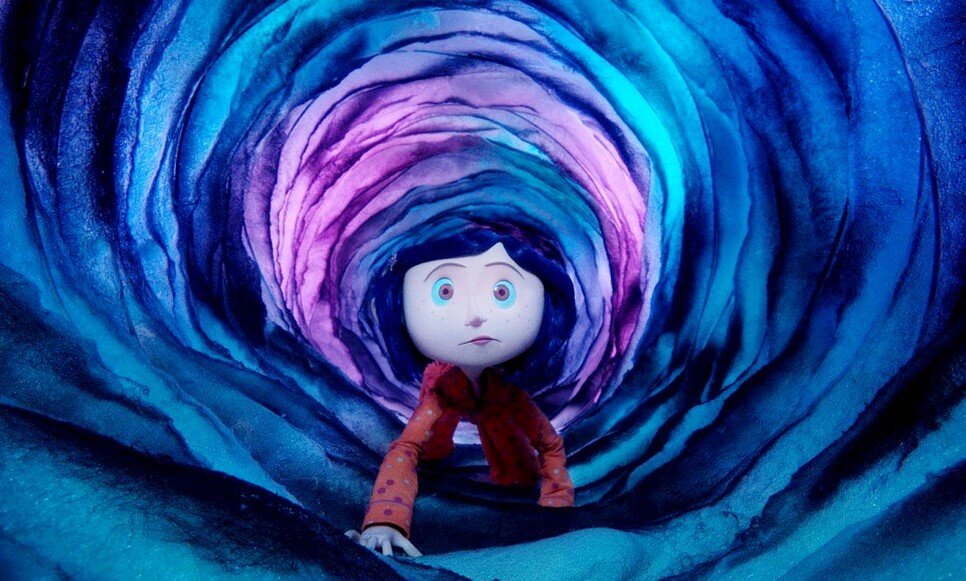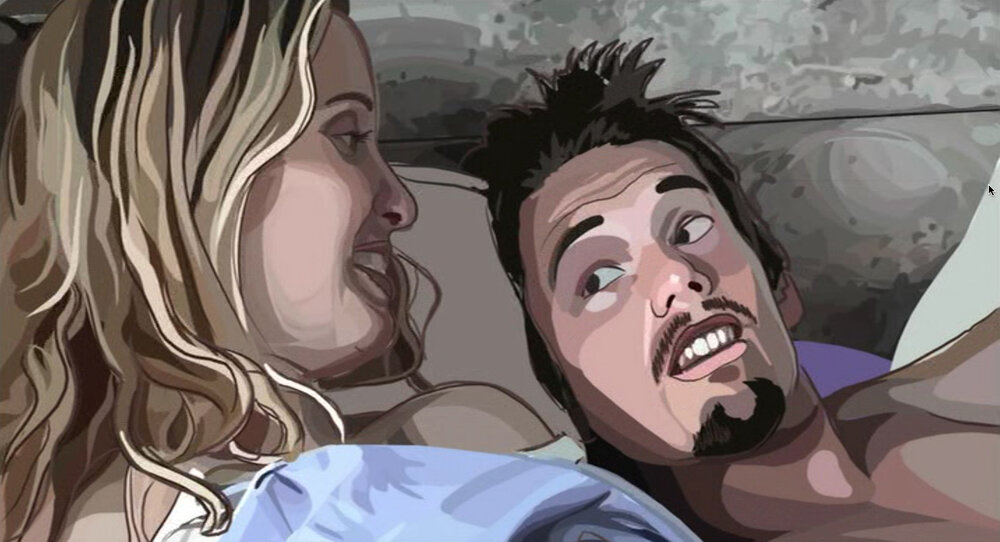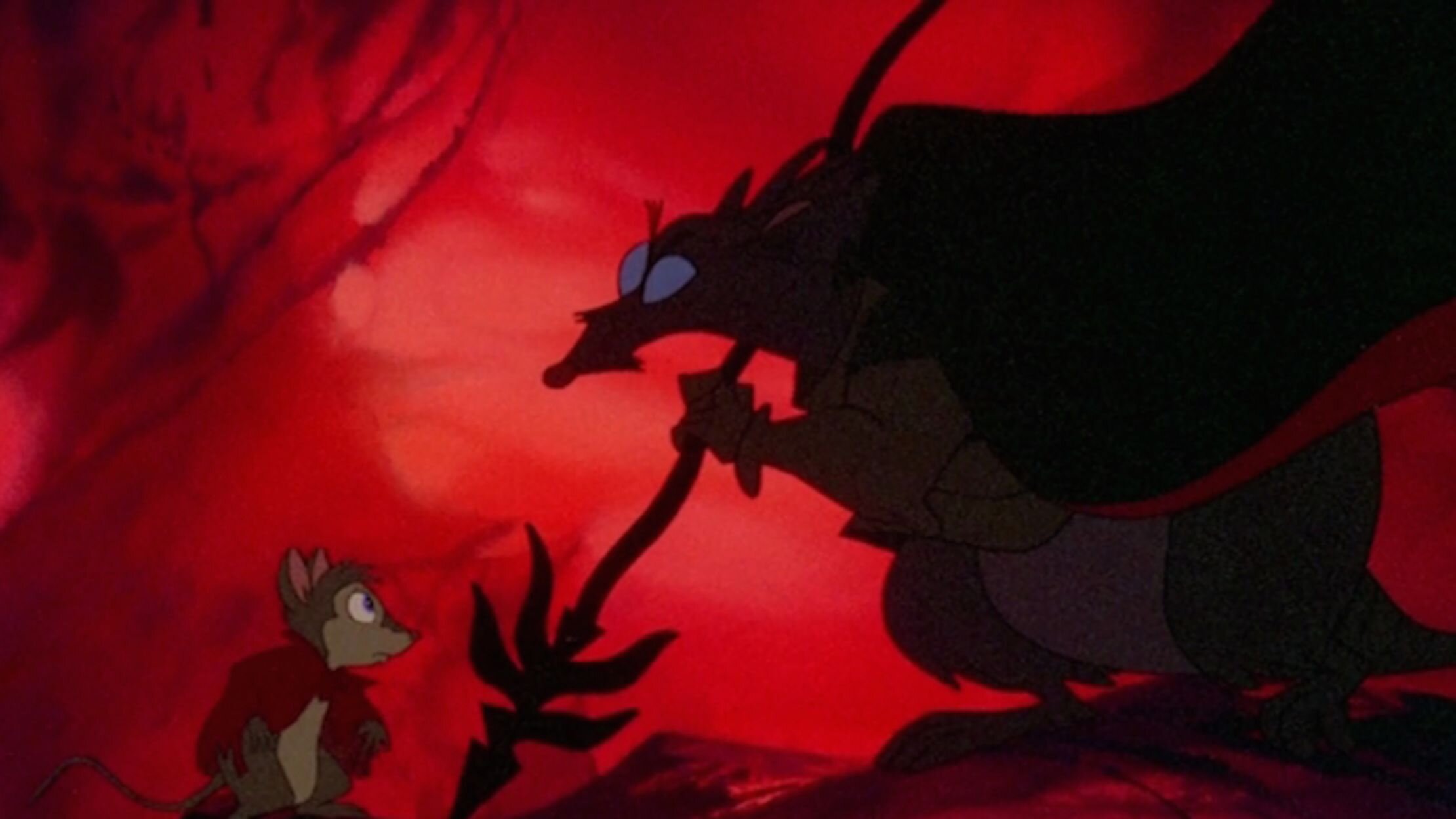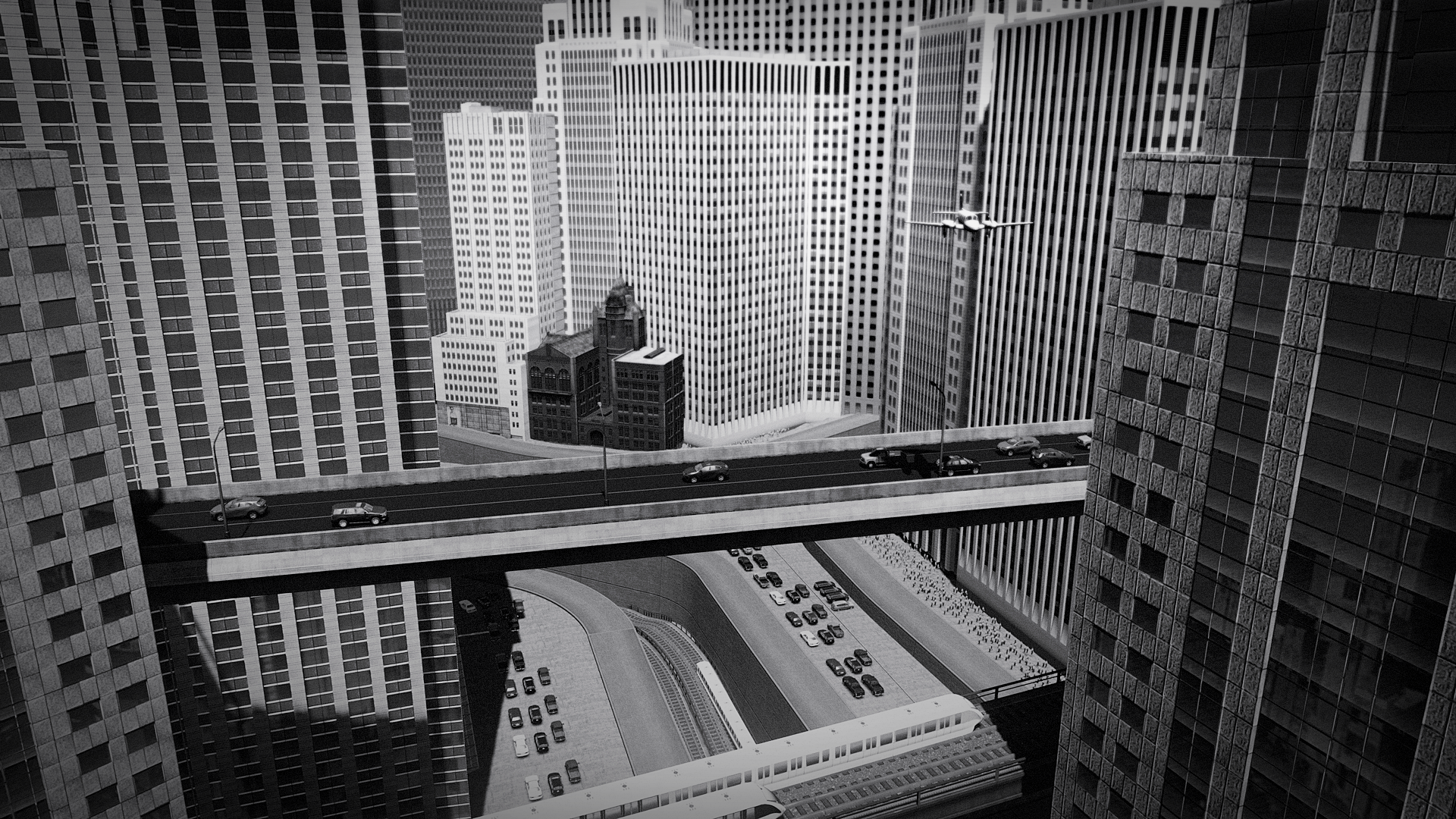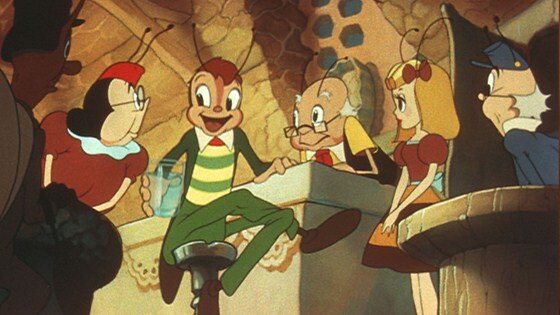Top 100 Fantasy/Animations
To celebrate the Fantasy/Animation website’s 100th (yes, 100th!) blog post we give you our Top 100 Fantasy/Animation films. A huge thank you to those academics, practitioners, VFX artists, animators, curators, filmmakers and fans out there who have contributed to Fantasy/Animation since we began. Here’s to the next hundred!
Top 100 (in no particular order…)
Peter Pan (P.J. Hogan, 2003) - A nicely low-fi blending of practical effects with decorative CGI, and one of the best adaptations of J.M. Barrie’s mythology of performative childhood ever produced.
Where the Wild Things Are (Spike Jonze, 2009) - A sadness to shield out all the sadness.
Bridge to Terabithia (Gabor Csupo, 2007) - It’s got religious themes, child stars who somehow aren’t annoying, and “squogres”.
The Dark Crystal (Jim Henson, 1982) - Puppets are animation. See our podcast on The Muppet Christmas Carol to find out why…
South Park: Bigger, Longer, Uncut (Trey Parker, 1999) - Paradise Lost with fart jokes and profanity.
Die Another Day (Lee Tamahori, 2002) - Not a fantasy or an animation you say? See Pierce Brosnan’s kite-surfing, and the invisible car…
Who Framed Roger Rabbit (Robert Zemeckis, 1988) - 1940s film noir is Kansas. Toontown is Oz. Discuss, and listen back here.
A Town Called Panic (Stéphane Aubier & Vincent Patar, 2009) - A horse, a cowboy and a cow walk into a submarine, and stop-motion hilarity ensues.
Life of Pi (Ang Lee, 2012) - We also choose the story about the tiger. It’s the better story, partially through the deliberately painterly register the film achieves through 3D CGI.
Shrek (Andrew Adamson & Vicky Jenson, 2001) - And NOT Shreks 2, 3, 4 or 400. A wonderful satire on the aesthetic and cultural impact of “Disneyfication”.
The Matrix (The Wachowskis, 1999) - Red pill or blue pill? Fantasy or animation? A film that never seems to fall out of categories of the wondrous.
Spider-Man: Into the Spider-Verse (Bob Persichetti, Peter Ramsey & Rodney Rothman, 2018) - Took the computer-animated film into a totally different direction, combining a phenomenal formal style and a very witty screenplay together with an explosive “visual crunch.” Listen to our musings about it here.
American Pop (Ralph Bakshi, 1981) - Ralph Bakshi’s animated musical fantasy feast of rock telling the poignant story of four generations of Russian Jewish immigrants, with a bit of Bob Seger thrown in for good measure.
The Wrong Trousers (Nick Park, 1993) - A film that contains probably the best chase sequence conducted by a penguin masquerading as a chicken ever committed to celluloid.
The Breadwinner (Nora Twomey, 2017) - Adapted from Deborah Ellis’ novel by filmmaker Nora Twomey, the tale of 11-year old Parvana living in Taliban-controlled Afghanistan is a deftly handled, visually sumptuous, and richly-rewarding tale of courage under fire.
Kung Fu Panda 2 (Jennifer Yuh Nelson, 2011) - Still the only computer-animated feature film directed solely by a woman (Jennifer Yuh Nelson), this 2011 sequel amps up the spectacle of the original with some cracking visuals and a truly terrifying villain in Lord Shen (voiced by Gary Oldman before he went all Churchill).
The Hunchback of Notre Dame (Gary Trousdale & Kirk Wise, 1996) - A real humdinger of a bellringer.
My Neighbor Totoro (Hayao Miyazaki, 1988) - Studio Ghibli par excellence sprinkled with that Miyazaki magic. Check out its sister feature Grave of the Fireflies too, or our podcast episode on the film.
Persepolis (Vincent Paronnaud & Marjane Satrapi, 2007) - Marjane Satrapi’s autobiographical tale set against the backdrop of the Iranian Revolution. In both form and content, it’s nothing short of breathtaking.
Iron Man (Jon Favreau, 2008) - The film that started it all. Even if it had all ended after this one, the film stands on its own as a bombastic post-9/11 terrorist feature. Plus Jeff Bridges shouts a lot.
Mary Poppins (Robert Stevenson, 1964) - A film about the subjective fantasies we need not just to live, but to feel. See our previous podcast episode.
Toy Story 1-4 (John Lasseter, Lee Unkrich, Josh Cooley, 1995-2019) - About childhood. For childhood. With our childhoods.
The Princess and the Goblin (József Gémes, 1991) - A Hungarian animation starring Rick Mayall as Froglip the Goblin king. Need we say more?
The Sword in the Stone (Wolfgang Reitherman, 1963) - An underrated Disney feature, adapting a seminal, prototypical work of high fantasy in T.H. White’s Once and Future King series.
The Black Cauldron (Ted Berman & Richard Rich, 1985) - Same as above, this time adapting Lloyd Alexander’s Chronicles of Prydain and laying the seeds for the complex world-building display in later examples of ‘Renaissance’ Disney.
Pan’s Labyrinth (Guillermo del Toro, 2006) - Is the faun real or imaginary? Answer: It’s “fantastic” (see Tzvetan Todorov’s The Fantastic).
The Wizard of Oz (Victor Fleming, 1939) - Pay no attention to the lack of animation behind the curtain. This is an all-time classic, and referenced somewhere in almost every film on this list.
Tron (Steven Lisberger, 1982) - The Wizard of Oz 2.0.
Return to Oz (Walter Murch, 1985) - A nightmarish sequel that has nothing in common with the original. Stop-motion is used to render the Nome King and his minions. Most people who’ve seen it remember Princess Mombi and the wheelers. Shudder.
The Kingdom of the Fairies (Georges Méliès, 1903) - The earlier A Trip to the Moon perhaps remains the more well-known of Méliès’ contribution to original storytelling, but his fantasy epic is equally beautiful. Enjoy the colour tinting especially.
Antz (Eric Darnell & Tim Johnson, 1998) - An important moment in CG film history, offering a real challenge to Pixar’s supremacy through its tale of a rebellious ant colony led by Woody Allen’s Z.
Edge of Tomorrow (Doug Liman, 2014) - Better than it needed to be Tom Cruise vehicle, with terrific visual effects supporting its reiterative videogame narrative logic.
The Good Dinosaur (Peter Sohn, 2015) - Better than Inside Out.
King Kong (Merian C. Cooper & Ernest B. Schoedsack, 1933) - When it comes to tales of giant gorillas and enormous apes, accept no imitators. Willis O’Brien’s stop-motion model work remains a sight to behold.
Men in Black (Barry Sonnenfeld, 1997) - Rick Baker’s practical effects matched to a suited and booted Will Smith and a curmudgeonly Tommy Lee Jones.
Coraline (Henry Selick, 2009) - Henry Selick’s stop-motion fantasy, produced by Laika, and a masterpiece of colliding worlds and the familiar made strange.
Arthur Christmas (Sarah Smith, 2011) - The second of only two computer-animated films made by Aardman - this one is a Christmas cracker, with some terrific jokes and a heart of gold.
Waking Life (Richard Linklater, 2001) - A slippery, slimy, and affecting Rotoshoppy look at life and love.
Snow White and the Seven Dwarfs (David Hand, 1937) - Established so many things that we now expect of popular animation in the Hollywood context. As one writer put it, it is hard to remember a time “before Snow White.”
The Book of Life (Jorge R. Gutiérrez, 2014) - Before Pixar’s Coco there was this - Jorge R. Gutiérrez’s story about storytelling and adventures in the afterlife.
Alice in Wonderland (Norman Z. McLeod, 1933) - Cary Grant plays the Mock Turtle, and W.C. Fields performs as Humpty Dumpty. Which is to be the master, you or the word?
Babe (Chris Noonan, 1995) - The pig speaks, and we cry bucketloads. The end.
Up (Pete Docter, 2010) - Squirrel! And for that sequence (you know which one we mean).
The Blood of a Poet (Jean Cocteau, 1932) - Jean Cocteau is more well-known for his Gallic reterlling of Beauty and the Beast, but this surrealistic, poetic adventure is perhaps more fascinating in its imaginative obscurity.
The Secret of NIMH (Don Bluth, 1982) - There are many terrific films made by the sadly short-lived Bluth studios, but the adaptation of the fantasy novel Mrs Frisby and the Rats of Nimh is a perfect blend of popular animation anthropomorphic convention with high fantasy.
Watership Down (Martin Rosen, 1978) - Human tyranny. Bloody violence. Bright eyes.
Loving Vincent (Dorota Kobiela & Hugh Welchman, 2017) - It’s like being inside Van Gogh’s imagination, gazing up at Starry Night.
Alice (Jan Švankmajer, 1988) - The first Lewis Carroll adaptation to reflect visually what tonally his description offers. An eerie, hallucinogenic odyssey.
The Chronicles of Narnia: The Lion, the Witch and the Wardrobe (Andrew Adamson, 2005) - It lacks the charm of the BBC TV serial, but it makes up for it with a CGI Aslan with a mouth that actually moves, and Tilda Swinton.
Rudolph the Red-Nosed Reindeer (Larry Roemer, 1964) - Rankin and Bass’ perennial favourite among US families is insane. And provocative, as Kodi Maier explores.
Gerald McBoing Boing (Robert Cannon & John Hubley, 1950) - 1950s UPA short fully reflecting mid-century modernist design and the creative possibilities for visualising animated sound.
Ex Machina (Alex Garland, 2014) - Robots come alive in this meditation on identity and sexuality, with an underlying and provocative eerieness that never quite shifts.
Ratatouille (Brad Bird, 2007) - The story of a rat that can cook, or a commentary on the value of art and creativity in an era of industrialised labour? Remember to compose all your salads like you are painting a picture.
Jumanji (Joe Johnston, 1995) - Mid-1990s VFX blockbuster that retells the Peter Pan narrative with runaway rhinos.
The Cabinet of Dr. Caligari (Robert Wiene, 1920) - German Expressionist extravaganza with unreliable narrator, twist ending, visual parallels to The Scream, animated onscreen text and a hyper-angular set design. Nightmarish (but in a good way).
Kubo and the Two Strings (Travis Knight, 2016) - Beautiful stop-motion and the second Laika on the list. Listen to our podcast episode here.
The LEGO Movie (Christopher Miller & Phil Lord, 2014). Everything is awesome.
Rise of the Guardians (Peter Ramsey, 2012) - Criminally underrated DreamWorks CG adaptation of William Joyce’s original book series. Hugh Jackman is the Easter Bunny, for goodness sake.
Paddington (Paul King, 2014) - It’s like a giant hug. Check out the sequel too…
Waltz with Bashir (Ari Folman, 2008) - A landmark in animated documentary filmmaking charting director Ari Folman’s own personalised account of the Lebanon war. Find our podcast episode here.
Jack the Giant Killer (Nathan Juran, 1962) - This film is bonkers, and way more fun than the nominal remake.
Beasts of the Southern Wild (Benh Zeitlin, 2012) - Limited fantasy or animation in this slice of poetic realism, but it serves up a great big bowl of Cajun culture with a garnish of monsters and imagination to help the whole thing go down with ease.
Asterix the Gaul (Ray Goossens, 1967) - A low-fi and perhaps modest adaptation of the famous French comic series, but a charmingly animated introduction to the magical history of Astrex, Obelix and the magic potion.
In the Name of the King: A Dungeon Siege Tale (Uwe Boll, 2007) - It’s directed by Uwe Boll. It’s awful. But Jason Statham does play a turnip farmer in it. He is not credible as such.
Pokémon: Detective Pikachu (Rob Letterman, 2019) - Believe it or not, this is the most read review on our website. Who are we to disagree.
The Rescuers (John Lounsbery, Wolfgang Reitherman & Art Stevens, 1977) - As close as Disney gets to socio-realism, with a disturbing villaniness gaslighting an orphan into doing her bidding.
Wizards (Ralph Bakshi, 1977) - Ralph Bakshi’s surreal masterpiece combines a counter-cultural, anarchic spirit with a hotch-potch, low-fi approach to animation that seems to breath new energy into US animation at a time it was most needed.
The Tale of the Fox (Ladislas Starevich, 1930) - Stop-motion feature from Polish-Russian filmmaker Ladislas Starevich, often cited as among his very best animated work.
The Wonderful World of the Brothers Grimm (Henry Levin & George Pal, 1962) - A part-biopic, part-fantasia by director/animator George Pal, telling the mythical story of the legendary folklorists, fused with dream sequences featuring the most famous inhabitants of their stories.
April and the Extraordinary World (Christian Desmares & Franck Ekinci, 2015) - A Hergé-esque adventure featuring a steampunk Paris and talking lizards. The graphic style of its design helps a lot too.
Yellow Submarine (George Dunning, 1968) - Dazzling in its surrealist designs and a film that briefly revived popular interest in animation in the 1960s, George Dunning’s feature set to the music and melodies of The Beatles is the perfect accompaniment to our podcast episode.
Shaun of the Dead (Edgar Wright, 2004) - British horror fantasy (famously labelled a “romcomzom”) that paid homage to 1970s horror film traditions and did wonders for sales of Cornetto ice creams.
Aladdin (Ron Clements & John Musker, 1992) - Is there anything more joyous than Robin Williams as the hyperactive and shape-shifting genie? No, there isn’t.
Metropolis (Fritz Lang, 1927) - Fritz Lang’s futuristic tale of human/machine relations practically defined the robot genre for cinema.
A Monster in Paris (Bibo Bergerson, 2011) - A sumptuous tale set in the French capital at the turn of the twentieth century, with a beautiful soundtrack and illuminating animation.
Run Lola Run (Tom Tykwer, 1998) - Splintered storytelling done properly, with a funky soundtrack and creative cartoon inserts in this contemporary German classic.
How to Train Your Dragon (Dean DeBlois & Chris Sanders, 2010) - Did something that DreamWorks animated films weren’t supposed to do. Sidelining pop-culture for the heartfelt relationship between one boy and his dragon, the soaring flight scenes in the first of the trilogy take digital aesthetics to new heights.
Duck Amuck (Chuck Jones, 1953) - Probably the best Hollywood cartoon to come out of the Golden Age, Chuck Jones’ deconstruction of animated practice torments an increasingly exasperated Daffy Duck. Many of the jokes would be repeated two years later in the short Rabbit Rampage, this time featuring Bugs Bunny and Elmer Fudd.
Fantasia (James Algar, et al., 1940) - Disney’s visual extravaganza that sets popular animation aesthetics to Classical music, and in doing so rightly elevates the medium to its status as an art form.
The Adventure of Prince Achmed (Lotte Reiniger, 1926) - Ornate silhouette animation from pioneer filmmaker Lotte Reiniger that demonstrates her signature style of 2D cutout animation. Listen to us chat about the film’s place within the traditions of abstract cinema, avant-garde animation, German Expressionism and fantasy storytelling in our podcast recorded live at the Cinema Museum in October 2019.
The Rescuers Down Under (Hendel Butoy & Mike Gabriel, 1990) - What. A. Soundtrack. Spine-tingling.
The Hobbit (Jules Bass & Arthur Rankin Jr., 1977) - Rankin and Bass’ charmingly naff take on J.R.R. Tolkien’s children’s book is better and shorter than the bloated Peter Jackson trilogy.
Mr. Bug Goes to Town (Dave Fleischer, 1941) - Regular listeners to the podcast will know already how much we enjoyed catching up on the two studio films released by the Fleischer Studios, and this was our favourite of the two. Listen to us chat about urban fantasy spaces and bugs here.
When the Wind Blows (Jimmy Murakami, 1986) - The most charmingly British film about a nuclear holocaust there is.
Aladdin & The King of Thieves (Tad Stones, 1996) - Because it’s fun to be contrary, this direct-to-TV sequel is a really good extension of the Aladdin mythology, moving into the realms of Ali Baba.
Spider-Man (Sam Raimi, 2002) / Spider-Man 2 (Sam Raimi, 2004) - Sam Raimi’s first two superheroes films are one of the best, highlighting the ability of CGI not just to enhance spaces, but create photo-realistic, yet impossible, spaces.
Avengers: Infinity War (Anthony Russo & Joe Russo, 2018) - A spectacular if overburdened pay off to decades of world-building. Oh snap.
Trollhunter (André Øvredal, 2010) - A found footage exposé on Scandinavian mythology. Best scene involves a prolonged discussion of whether a cameraperson of Muslim faith is likely to fall victim to the troll’s prowess to sniff out Christians.
Jason and the Argonauts (Don Chaffey, 1963) / Clash of the Titans (Desmond Davis, 1981) - It’s a tie between skeleton armies and Krakkens for the best of Harryhausen’s ouvre. Why not watch both and decide for yourself, or listen to our Jason and the Argonauts podcast here.
The Lord of the Rings (Peter Jackson, 2001-2003) - Peter Jackson told us to ‘look past’ those hobbits. They did have rather hairy feet though.
Tangled (Nathan Greno & Byron Howard, 2010) - Better than Frozen.
Frozen (Chris Buck & Jennifer Lee, 2013) - Not as good as Tangled, obviously. But still great.
Harry Potter and the Deathly Hallows: Part 1 (David Yates, 2010) - Difficult to pick a standout entry, but this one perhaps steals it thanks to its exquisite 3-minute silhouette animation telling the origins of the Hallows, created by Framestore.
Anchors Aweigh (George Sidney, 1945) - Gene Kelly and Jerry Mouse. Dancing together!
The Triplets of Belleville (Sylvain Chomet, 2003) - Minimal dialogue and an expressionist, borderline surreal visual style make Sylvain Chomet’s feature a charming tale of 1900’s France. Listen to our podcast on the film here.
Stardust (Matthew Vaughn, 2007) - A story of romantic love in a magical land, adapted by Jane Goldman and based on Neil Gaiman’s 1999 novel. A fantastical experience sprinkled with requisite touches of silliness.
How a Mosquito Operates (Winsor McCay, 1912) - A Winsor McCay short that isn’t Gertie the Dinosaur. But an absolute marvel of early “personality animation” showcasing the possibilities for expressive characterisation.
The Tale of the Princess Kaguya (Isao Takahata, 2013) - This celestial folk-tale adaptation on passing time is crafted in loose yet precise brushstroke style that recalls Japanese woodblock and scroll art.
Street of Crocodiles (Brothers Quay, 1986) - Adapted from Bruno Schulz’s short story, this Brothers Quay stop-motion of unscrewing screws and deformed dolls’ heads typifies the filmmakers’ nightmarish cabinet of curiosities.
Get a Horse! (Lauren MacMullan, 2013) - Lauren MacMullan’s retro-short marks Mickey Mouse’s return to cinema screens after almost a 20-year hiatus, while weaving Disney nostalgia and its own animation history back into its 2D and 3D imagery.
If you would like to contribute to a future Fantasy/Animation blog, or if you’ve just got the germ of an idea for a post, then please do get in touch via the “How to Contribute” tab above!
**Article published: May 29, 2020**












